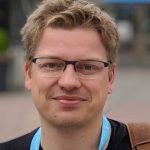
Clustering Event | Speakers
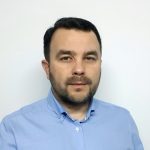
Marcin Lawenda
Project Coordinator – Senior Research Fellow at Poznan Supercomputing and Networking Center (PSNC)
Introduction to Hidalgo2
HiDALGO2 aims to offer fast and precise simulations addressing global challenges, considering factors like current weather and traffic conditions. The goal is to enhance leading scientific applications in environmental protection for large-scale and precise analysis of threats to human life and health.

Matteo Mascagni
Project Officer – Programme Manager R&I, European Union’s “EuroHPC-JU”
Keynote: The Future of Technology Advancements
An overview of the EU HPC, Quantum Computing and AI Ecosystem Operations.

David Caballero
Researcher at Wildfires Pilot – International freelance consultant on risk assessment and awareness at MeteoGRID
Global Challenges and HPC: The Case of Wildfires
This pilot focuses on demonstrating the usefulness of parallel computing in HPC clusters for solving some of the complex phenomena that occur during wildfires. To achieve this, a cross-scale analysis is performed, using different territorial extents, spatial resolutions, and temporal domains. The modeling strategy is detailed, including the datasets used (especially meteorological data), the models applied at each scale, the simulation challenges (such as flame front and smoke propagation), and their implementation on HPC systems. In particular, the results of simulations of fire spread, fire–atmosphere interactions, and smoke dispersion across the landscape using the WRF-SFIRE model are presented. In addition, several simulations of fire behavior around buildings using the OpenFOAM/fireFoam/PGF model are shown, emphasizing the strategy and tools for detailed volumetric description of vegetation, biomass distribution, and porosity. Finally, several approaches for advanced visualization in immersive environments are presented, including optical effects of smoke on light and the rendering of large vegetation populations.
A demo will be presented showing a wildfire propagation simulation in the Győr area (Hungary). In addition, a demo simulating fire behavior around a residential building will be shown. As a complement, an example illustrating vegetation distribution and its interpretation as biomass and porosity distribution will also be presented.

Svetlana Valger
Academic staff member/Researcher at Stuttgart Technical University of Applied Sciences
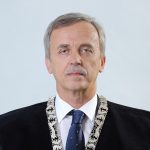
Zoltan Horvath
Urban Air Project Pilot Leader – Professor, Head of the Department of Mathematics and Computational Sciences at Széchenyi István University
Urban Air: Simulating City Air Quality and Comfort with HPC
This session illustrates how city authorities, urban planners, and environmental agencies can utilize HPC for rapid and reproducible live analyses of urban airflow, pollutant dispersion, comfort levels, and climate indicators at both street and building scales. By employing OpenFOAM and RedSim multi-CPU/GPU solvers, simulations can be conducted at high spatial and temporal resolutions, incorporating open geodata, weather models, emission sources, and optional sensor data. The demonstration includes steps for preparing a city scenario using the UAP web interface, configuring and launching simulations, and visualizing the results.
Panel Discussion: Digital Twins for Sustainable Cities: From Buildings to Urban Air
This panel brings together experts in simulation, information systems, and urban planning to discuss how HPC and open data can transform city planning and resilience. Building on the Ktirio and Urban Air pilots, the discussion will explore how digital twins, from individual buildings to entire neighbourhoods, can provide decision-makers with fast, reliable, and scalable insights on energy efficiency, comfort, air quality, and environmental health.
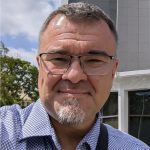
Christophe Prud’homme
Urban Building Model Pilot Leader – Professor in Applied Math at University of Strasbourg (UNISTRA) and Director of Cemosis
Ktirio — From Building to City-Scale Energy on EuroHPC system using Open Data
Provide cities and stakeholders with fast, reproducible “what-if” analyses (energy demand, comfort, heat-stress indicators) to support planning and resilience—without requiring city-wide IoT deployments. Feel++/Ktirio simulation toolchain packaged in containers (Apptainer/Docker), portable builds (Spack/GitHub Actions), and SLURM-based execution on large HPC systems. Inputs rely on open geodata and meteorological forcing; we also handle building-level sensors where available (I’ll show examples from a few buildings we monitor).
We’ll start from the Ktirio GUI/WUI application to: (i) prepare datasets, (ii) configure the simulation, (iii) launch it at very large scale on the EuroHPC systems, and (iv) visualize results and autogenerated reports (KPIs, maps, time series). I’ll keep it visual and short, with a recorded fallback if live connectivity is constrained.
Panel Discussion: Digital Twins for Sustainable Cities: From Buildings to Urban Air
This panel brings together experts in simulation, information systems, and urban planning to discuss how HPC and open data can transform city planning and resilience. Building on the Ktirio and Urban Air pilots, the discussion will explore how digital twins, from individual buildings to entire neighbourhoods, can provide decision-makers with fast, reliable, and scalable insights on energy efficiency, comfort, air quality, and environmental health.
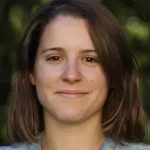
Clara García-Sánchez
Associate Professor at Delt University of Technology (TU Delft)
Panel Discussion: Digital Twins for Sustainable Cities: From Buildings to Urban Air
This panel brings together experts in simulation, information systems, and urban planning to discuss how HPC and open data can transform city planning and resilience. Building on the Ktirio and Urban Air pilots, the discussion will explore how digital twins, from individual buildings to entire neighbourhoods, can provide decision-makers with fast, reliable, and scalable insights on energy efficiency, comfort, air quality, and environmental health.

Yannick Hofmann
Media Artist & Researcher at Fraunhofer Institute for Industrial Engineering IAO
Panel Discussion: Digital Twins for Sustainable Cities: From Buildings to Urban Air
This panel brings together experts in simulation, information systems, and urban planning to discuss how HPC and open data can transform city planning and resilience. Building on the Ktirio and Urban Air pilots, the discussion will explore how digital twins, from individual buildings to entire neighbourhoods, can provide decision-makers with fast, reliable, and scalable insights on energy efficiency, comfort, air quality, and environmental health.
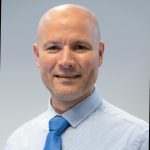
Tarek Gaber
Associate Professor at University of Salford
Panel Discussion: Digital Twins for Sustainable Cities: From Buildings to Urban Air
This panel brings together experts in simulation, information systems, and urban planning to discuss how HPC and open data can transform city planning and resilience. Building on the Ktirio and Urban Air pilots, the discussion will explore how digital twins, from individual buildings to entire neighbourhoods, can provide decision-makers with fast, reliable, and scalable insights on energy efficiency, comfort, air quality, and environmental health.

Georgia Nikolakopoulou
Head of Communication and Dissemination at Future Needs
Panel Discussion: Digital Twins for Sustainable Cities: From Buildings to Urban Air
This panel brings together experts in simulation, information systems, and urban planning to discuss how HPC and open data can transform city planning and resilience. Building on the Ktirio and Urban Air pilots, the discussion will explore how digital twins, from individual buildings to entire neighbourhoods, can provide decision-makers with fast, reliable, and scalable insights on energy efficiency, comfort, air quality, and environmental health.

Michal Kulczewski
Renewable Energy Sources Pilot Leader – Senior Specialist at Poznan Supercomputing and Networking Center (PSNC)
Renewable Energy Sources: Modeling Renewable Energy Production with HPC
This session illustrates how HPC fosters utilisation of renewable energy sources. With the Renewable Energy System pilot, which merges the Weather Research and Forecasting (WRF) and EULAG models for both mesoscale and microscale atmospheric simulations, energy planners can evaluate the potential for wind and solar energy with high spatial and temporal resolution, enhanced with uncertainty quantification. The energy AI-based module estimates production from wind and solar photovoltaic farms. The demonstration showcases the workflow for photovoltaic systems, beginning with the setup of scenarios that incorporate different models and data, followed by running large-scale simulations on EuroHPC systems. The results includes visualisations of electric energy production and weather forecasts.

Ravi Ayyala Somayajula
Researcher at Material Transport in Water Pilot – PhD researcher at Friedrich-Alexander-Universität (FAU)
Material Transport in Water: Simulating Pollution Transport in Rivers Using HPC
The Material Transport in Mater (MTW) pilot addresses the importance of temperature simulations in riverbeds, where thermal conditions can profoundly influence various elements within a river ecosystem. These effects include ecological functioning, the incubation and transport of fish eggs, and the diversity of aquatic communities. The river temperature also plays a key role in ecosystem services such as power plant cooling and strongly influences the transport and deposition of sediment particles.
To capture these coupled processes, the framework extends waLBerla with advanced modeling capabilities for sediment and temperature transport. The implementation makes use of Just-in-Time (JIT) code generation technologies, enabling performance portability for diverse hardware architectures and efficient customization for complex physical scenarios. With the Lattice Boltzmann method (LBM) as the core numerical model, the project provides a scalable and flexible platform for simulating temperature-driven river dynamics to support research on environmental and engineering applications.

Martin Kronbichler
Professor at Ruhr University in Bochum – dealii-x Project Coordinator
Towards Exascale Simulations of Organs in the Human Body: A Perspective from the dealii-X CoE
The presentation will include insights gained in the first year of the centre of excellence dealii-X, which aims to advance science in the simulation of the human brain, the lungs, the circulatory system, the liver as well as cellular processes. We achieve excellence in this variety of modeling by a multi-layered software approach: We provide a generic framework for finite element computations through the open-source library deal.II, a project aimed at providing building blocks to the rapid development of application codes. Several activities in our CoE are directed towards improving the infrastructure of the library in terms of coupling algorithms, advanced discretizations, multigrid methods and matrix-free implementations to optimally use compute capabilities in modern parallel computer. Furthermore, we integrate advanced linear algebra packages for providing fast and robust algorithms. Research groups specializing in each applications can then concentrate on the application details, such as the biomechanical processes, specific challenges and perspectives of increased simulation accuracy.
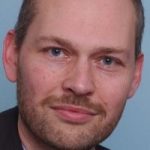
Guntram Berti
Mathematics Consultant & University Professor, Consulting Mathematical Methods & Brandenburgische Technische Universität Cottbus-Senftenberg
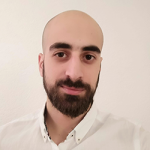
Konstantinos Iliakis
Senior Researcher at National Technical University of Athens
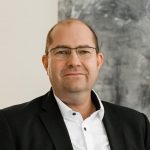
Bastian Koller
Managing Director at High Performance Computing Centre Stuttgart (HLRS)

Andreas Athenodorou
Associate Research Scientist at The Cyprus Institute – NCC Cyprus
